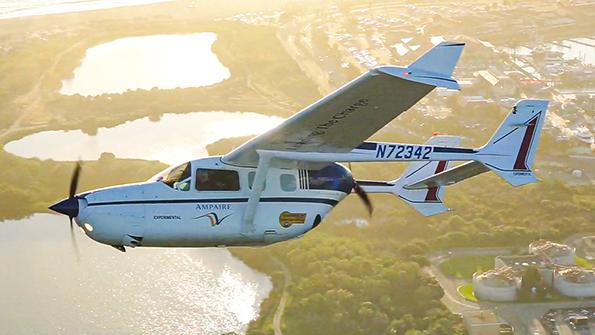
Ask the Editors: The Aviation Week Network invites our readers to submit questions to our editors and analysts. We’ll answer them, and if we can’t we’ll reach out to our wide network of experts for advice.
Aircraft manufacturers work horizontally with engine manufacturers such as CFM. Do you see the same thing happening with electric propulsion?
Executive Editor, Technology Graham Warwick responds:
In today’s mature aircraft propulsion marketplace, there is a clear delineation of roles and interfaces between the aircraft and the engine manufacturer. That is not the case in the emerging electrified aircraft propulsion market.
The traditional model was already evolving as the need for higher and higher bypass ratios, and bigger and bigger fans, forced aircraft designers and engine developers to work together more and more closely to find ways to integrate these larger turbofans onto aircraft.
Instead of the mature horizontal model of today’s engine market, the electric-propulsion industry has so far followed a more vertically integrated approach. The main reason is the absence of any supply chain. The aircraft developer is forced to be the propulsion developer.
Startups like Ampaire, VoltAero and ZeroAvia are developing the aircraft as well as the propulsion system—or modifying an aircraft to electric propulsion themselves—because there is not an existing industrial base into which they can tap.
A second reason is the tight integration between aerodynamics and propulsion in many of the electric aircraft concepts—particularly those with distributed electric propulsion, such as most of the electric vertical-takeoff-and-landing (eVTOL) air taxi designs.
A third reason is competitive. Vertical integration worked well for SpaceX, giving the space-launch startup control over its own destiny and enabling it to be become the lowest-cost provider, and now the dominant player, in its market. This vertical approach is likely to evolve. Ampaire and ZeroAvia both intend to become electric-propulsion suppliers once they have kick-started the market by modifying existing aircraft. There are also some pure propulsion-system plays such as H55 and VerdeGo Aero.
That evolution has already begun. Siemens was an early leader in electric aviation, and Airbus’ E-Fan X hybrid-electric demonstrator saw Rolls-Royce having to share the propulsion system with Siemens. Then Rolls-Royce bought Siemens’ e-Aircraft unit and a more normal balance was resumed. Of course, Airbus and Rolls have now canceled the E-Fan X, but that is another story.
